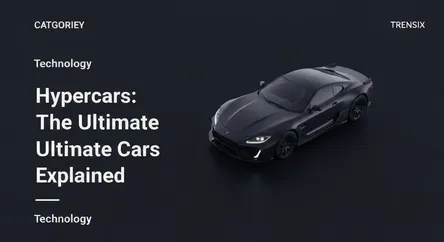Technology
Hypercars: The Ultimate Cars Explained

What is a hypercar? Explore the pinnacle of automotive engineering, featuring extreme performance, cutting-edge technology, and multi-million dollar prices.
What is it?
A hypercar represents the absolute peak of automotive design and technology, a tier above even the most extreme supercars. These are exceptionally rare, limited-production vehicles with multi-million dollar price tags. They are defined by their use of cutting-edge materials like carbon fiber, advanced hybrid or electric powertrains, active aerodynamics, and staggering performance figures—often exceeding 1,000 horsepower. Think of them as road-legal race cars, with examples including the Bugatti Chiron, Koenigsegg Jesko, and the all-electric Rimac Nevera. They are the ultimate expression of a manufacturer's engineering prowess.
Why is it trending?
Hypercars are trending due to a combination of technological advancement and media exposure. The push toward electrification has spawned a new generation of electric hypercars that break acceleration and speed records, capturing massive public attention. Furthermore, social media and influencer culture have amplified their status as ultimate symbols of wealth and exclusivity. For automakers, building a hypercar is a 'halo' project; it showcases their most advanced technology and engineering talent, which generates immense brand prestige that benefits their entire product line, even if only a handful are ever sold.
How does it affect people?
While only a tiny fraction of the population will ever own a hypercar, their impact is widespread. They serve as rolling laboratories for new technology. Innovations in hybrid systems, battery efficiency, lightweight materials, and aerodynamics developed for these extreme machines eventually trickle down into more accessible, mainstream vehicles. For the public, they are a source of inspiration, pushing the boundaries of what's possible in automotive engineering and shaping the future design and performance of the cars that millions of people will eventually drive.